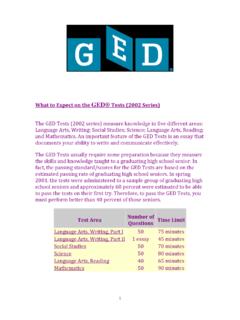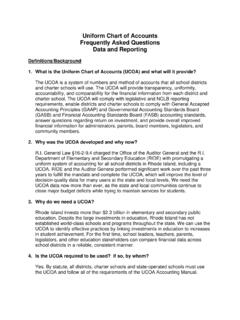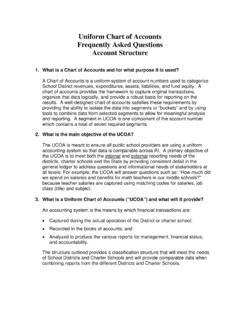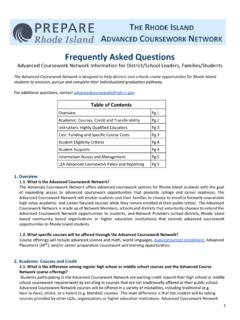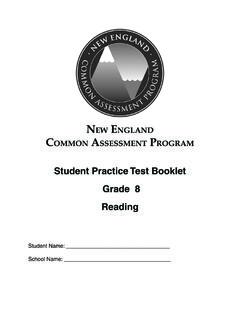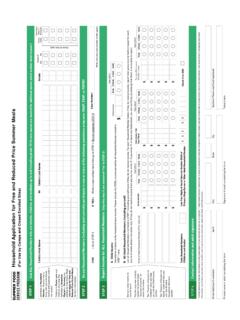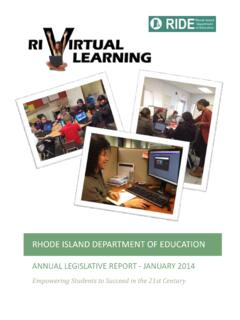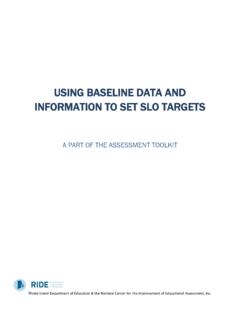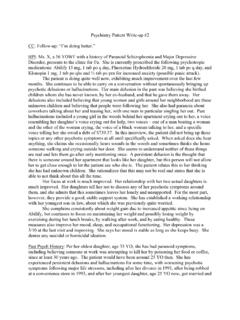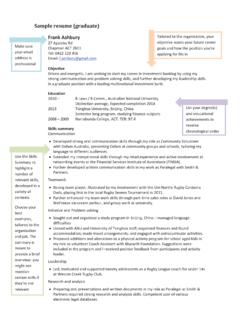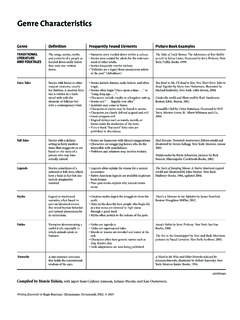Transcription of USING BASELINE DATA AND INFORMATION TO SET SLO …
1 Rhode Island Department of Education & the National Center for the Improvement of Educational Assessment, Inc. USING BASELINE DATA AND INFORMATION TO SET SLO TARGETS A PART OF THE ASSESSMENT TOOLKIT P a g e | 2 Past Did my students learn what I intended to teach them? Or what are my students coming into my class knowing and able to do? Present I am in the midst of teaching students and I need a quick dipstick to see if they re getting it, to check their understanding Future Based on the data I collect, I will adjust future lessons, change curriculum, and plan for my current students and even for future years, figuring out a better way to engage students in my lesson Why gather and use data and INFORMATION ? The increased use of a variety of assessments, as well as more sophisticated technology, has made more data available in schools than ever before.
2 This access to current and varied student learning data has been described as teaching with the lights on because educators do not have to guess what students know or hope that their instruction is having the desired effect. Data provide a way to confirm what students are learning and the extent to which they are making progress towards goals and targets. USING data systematically whether running records, observations, response logs, performance assessments, or quizzes to ask questions and gain insight about student progress is a way to tailor instruction to meet the needs of all students. Putting faces on the data reminds us that the numbers represent real children and young people striving to make the most of themselves as they prepare for an uncertain future.
3 - Foreword from Sir Michael Barber in Putting Faces on the Data (2012) Kathy Samuels, a high school English teacher, emphasized the importance of data in her classroom. She attributed her conscious focus on data to her teacher residency program, in which she spent a year devoted to looking at student data and learning to be reflective. I used to think that data was scary until I realized that I use it all the time! Ms. Samuels noted that data must inform instruction and keep teachers accountable for students. Data from my own assessments is the most common data used in my classroom, though I do carefully review state assessment data when it becomes available. I like to think of data as helping to show the past, present, and future.
4 P a g e | 3 What is Data? For many educators, the word data conjures up images of cumbersome spreadsheets, stacks of student reports, and lists of cold, hard numbers. When conceived of in this way, data can seem at odds with the holistic and nuanced way teachers think about their students. But the truth is data is just INFORMATION . Teachers collect and use INFORMATION about their students nearly every day, whether or not they call it data . Attendance, behavior, quizzes, observations, comments, grades, and test scores are all data sources. Data collected and organized in a systematic way can be used to make classroom, district, or system decisions. It should provide an accurate measurement of student progress or lack of progress of content knowledge on tasks, activities, or behaviors.
5 Data can be quantitative or qualitative. The table below illustrates some common types of quantitative and qualitative data used by teachers everyday: Quantitative Data Qualitative Data (expresses quantities, usually consists of numbers, can be measured) (expresses qualities, usually consists of descriptions, can be observed) State assessment results Report card grades Attendance Scores on formative or summative assessments Individual Education Plans Report card comments Observations of student behavior, work habits, interactions with other students and teachers, etc. Individual Education Plans USING the INFORMATION that data provides allows educators to make decisions aimed at improving student achievement, such as: prioritizing instructional time targeting struggling or high-performing students to provide individualized instruction identifying individual students strengths and needs to provide appropriate interventions gauging the instructional effectiveness of classroom lessons refining instructional strategies examining school-wide data to determine patterns of learning and consider how to adapt curriculum communicating student progress to students and families (Hamilton, L.)
6 , et al, 2009) When it comes to improving instruction and learning, it s not the quantity of the data that counts, but how the INFORMATION is used. -Lewis, Harris, Muoneke, Times, 2012 P a g e | 4 Many assessments can yield both quantitative and qualitative data. Neither form is superior; rather, each type can provide teachers with different INFORMATION . For example: Mr. Ramsden teaches third grade and his students take a quiz on single digit multiplication. During the quiz he observes students as they work, noting how quickly they begin problems, their use of manipulatives, whether or not they show their work, and their method for solving the problems (counting by ones, skip-counting, drawing pictures, etc.). These are examples of qualitative data that help him get to know his students so that he can provide helpful feedback in future lessons.
7 After the quiz, he corrects their work, records their scores, and shares with students their percentage of correct answers. He notices that the most common mistakes involved multiplying sevens and nines. These are examples of quantitative data. Mrs. White teaches 8th grade Physical Education. Her students are completing a physical activity BASELINE assessment. The students are responsible for travelling to different stations around the gym and completing various physical challenges. During the assessment Mrs. White records observations about common difficulties and individual student engagement. These are examples of qualitative data. After the assessment Mrs. White compiles the data (# of sit-ups completed in 60 seconds, # of pull-ups completed) to identify students levels of fitness, and group strengths and weaknesses to inform future lessons and activities.
8 These are examples of quantitative data. These are just two of the examples of the types of evidence teachers can use to collect quantitative and qualitative data. Other common forms include: Formative Assessments Interim Assessments Summative Assessments observations running records exit slips classwork quarterly writing prompts fall/winter/spring benchmarks performance tasks portfolios (writing, art, etc.) end-of-unit test research paper lab report No single assessment can tell educators all that is needed to make well-informed instructional decisions. Therefore, multiple data sources should be used when possible and when the INFORMATION they provide is complimentary, rather than redundant. The following is an overview of data sources, the purpose they serve, and the limitations of USING them for making instructional decisions and setting SLO targets.
9 Triangulation is the process of USING multiple data sources to address a particular question or problem and USING evidence from each source to illuminate or temper evidence from the other sources. It also can be thought of as USING each data source to test and confirm evidence from the sources in order to arrive at well-justified conclusions about students learning needs. -Hamilton et al., 2009 P a g e | 5 Data Source Purpose Limitations Annual State Assessments * Not appropriate for setting SLO targets Analyze broad areas of relative strengths and weaknesses among students Identifying students or groups of students who may need particular support Setting school-wide, grade-level, department-level or classroom goals for students annual performance Reveals which students performed advanced, proficient, partially proficient, and substantially below proficient.
10 This could help inform how you identify specific tiers for SLO Targets. A significant amount of time may have passed between the administration and when data become available; students knowledge and skills may have changed during that time Over-alignment of instructional practices with test content Interim Assessments First benchmarking assessment of the year ( , Rhode Island Interim Assessment, District/LEA-developed Assessment, STAR, DIBELS, DRA2, PALS) Evaluate instructional strategies Track the progress of current students in a single school year Reveals which students performed advanced, proficient, partially proficient, and substantially below proficient. This could help inform how you identify specific tiers for SLO Targets as well as monitoring progress during the year.

